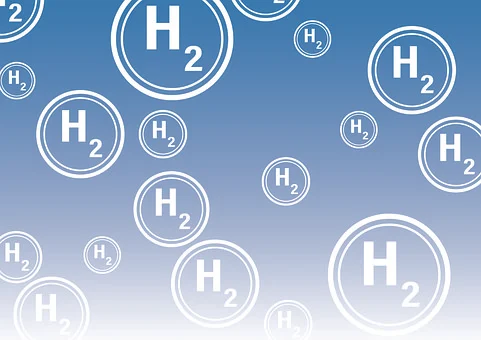Hydrogen: Future energy carrier

Hydrogen is an essential element of the modern economy. It also serves as fuel thereby saving many lives. It can be produced from various domestic resources without any emission of greenhouse gases. Considering its advantages, expanding the utilization of hydrogen has become a global priority.
One of the major developments w.r.t hydrogen is Hydrogen Fuel Cell Technology. In this, a fuel cell generates electricity to drive an electric motor by combining hydrogen and air in the presence of catalysts. Water vapor is the only by-product generated through this process. The advantages of this technology are:
- Zero-Emission power
- Robust reliability
- Lower operational costs.
- E-mobility
Keywords: Hydrogen, Hydrogen Fuel Cell Technology, energy carrier, crude hydrogen, contaminant gases, liquid organic hydrogen carriers
A recent study published in Science Advances shows the exciting progress made by researchers toward the elimination of the barriers to using hydrogen as an energy carrier.
The four main sources for the commercial production of hydrogen are natural gas, oil, coal, and electrolysis. They account for 48%, 30%, 18%, and 4% respectively of the world's hydrogen production. There are various methods used for the production of hydrogen such as thermochemical, electrolytic, direct solar water splitting, etc. One of the methods is the production of hydrogen by reacting high-temperature steam with natural gas. But, the major drawback of this method is that it results in the production of crude hydrogen. Crude hydrogen consists of contaminant gases that decrease the value of hydrogen. These contaminant gases are difficult to remove. It is a tedious task to extract hydrogen from the crude mixture.

The difficulty of extracting hydrogen from the contaminant gaseous mixture has restricted the utilization of liquid organic hydrogen carriers ( They are used for storing hydrogen). To date, many studies have taken place for overcoming the challenge of storage of hydrogen in the presence of contaminant gases.
Yoichi Hoshimoto, the corresponding author said, "even a small amount of carbon monoxide can hinder hydrogen uptake. Thus, costly purification methods to isolate the hydrogen prior to storage are necessary".
For overcoming this challenge, the team of researchers synthesized shelf-stable triaryl boranes. They took up hydrogen even in the presence of contaminant gases. This study has surely achieved ground-breaking results:
- Hydrogen storage with up to greater than 99% efficiency
- Subsequent hydrogen is released at a purity of up to 99.9%.
Researcher Hoshimoto explains, " The industrial value of molecular hydrogen has long been plagued by substantial quantities of carbon monoxide and other contaminants. However, in the catalytic hydrogenation method we developed, even a five-fold excess of a contaminant wasn't a problem, and hydrogen uptake and release were each achieved without using any solvents".
Thus, this study has emerged as proof of a novel hydrogen production method that is effective in separating contaminant gases and hydrogen. This will reduce further purification steps that were essential in traditional methods. It also indicates an increase in the economic sustainability of hydrogen. Future advances in obtaining hydrogen from the water will surely help in bringing a sustainable hydrogen-based economy.
Story Source:
Materials provided by Osaka University. The original text of this story is licensed under a Creative Commons License. Note: Content may be edited for style and length.
Journal Reference:
- Taiki Hashimoto, Takahiro Asada, Sensuke Ogoshi, Yoichi Hoshimoto. Main group catalysis for H 2 purification based on liquid organic hydrogen carriers. Science Advances, 2022; 8 (43) DOI: 10.1126/sciadv.ade0189
0 Comments